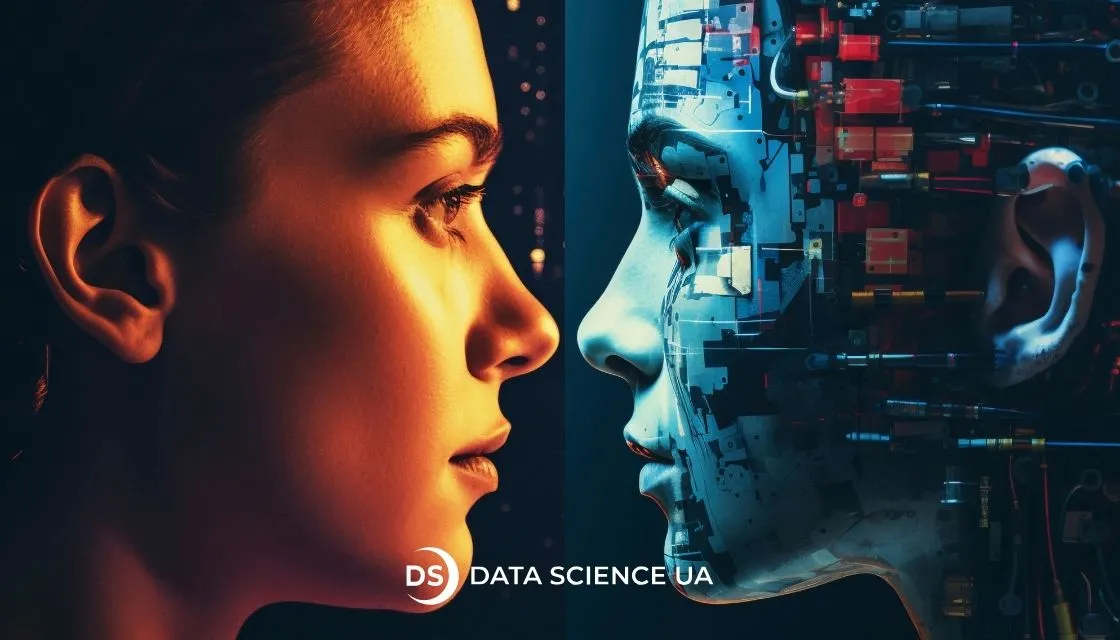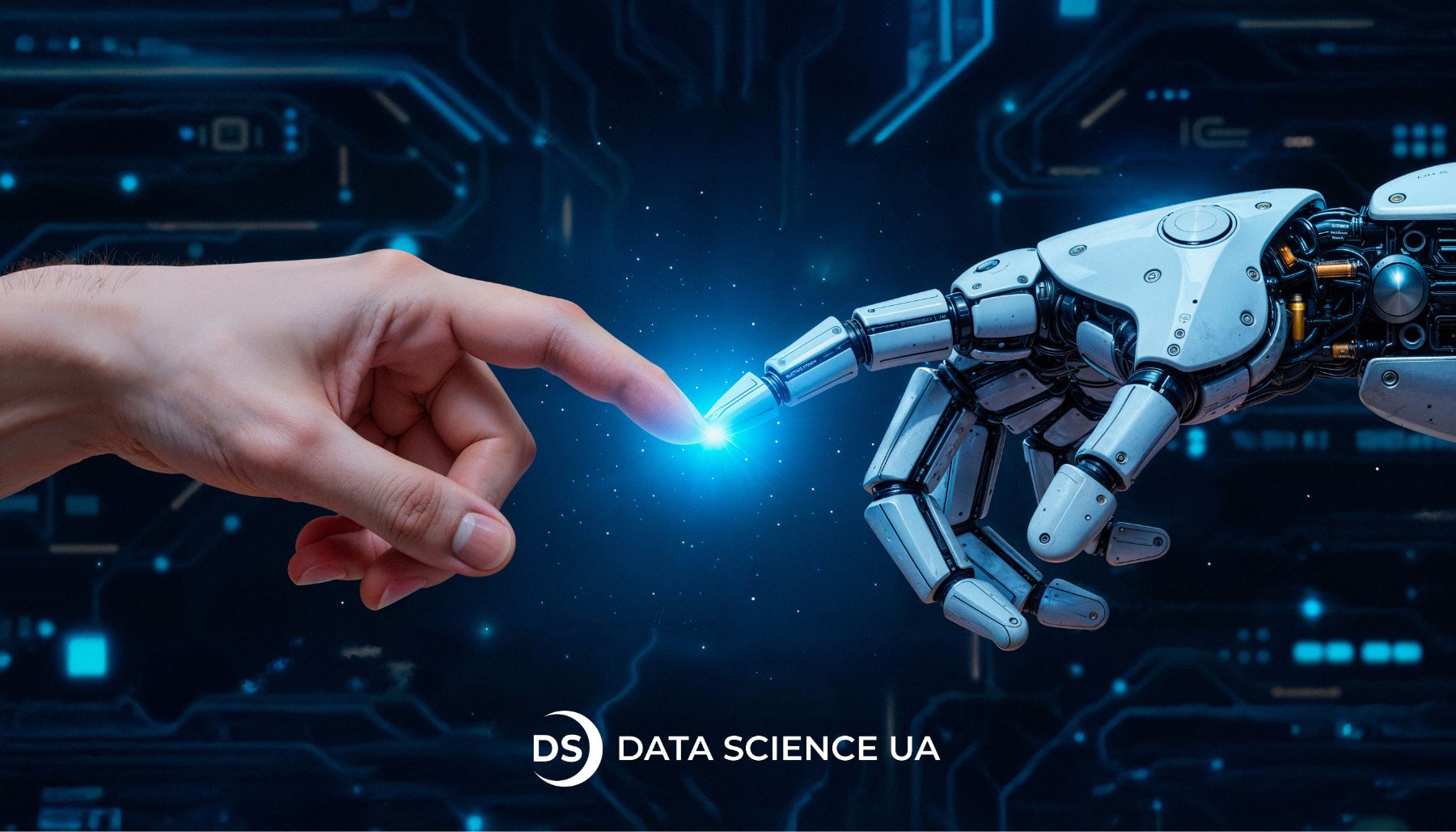Table of Contents:
- AI vs ML vs Data Science: What Is the Difference?
- What is Artificial Intelligence (AI)?
- Exploring Machine Learning (ML)
- What is Data Science?
- Comparing Features: Data Science vs. Machine Learning vs. AI
- Distinguishing AI from Machine Learning
- Differentiating Data Science and Machine Learning
- Trends and Challenges in Data Science, AI, and ML for 2024
- Comparing Salaries: Machine Learning vs. Data Science
- Careers in Data Science, Artificial Intelligence, and Machine Learning
- FAQ
Data Science vs Machine Learning vs AI
Understand the key differences between machine learning vs AI vs data science with this insightful blog post. Explore their unique roles and applications in the field.
AI vs ML vs Data Science: What Is the Difference?
In tech, there are three major topics: AI, ML, and data science. It can be challenging to understand how these areas differ or overlap. Let’s simplify these concepts using terms like data science vs machine learning vs AI. AI is about making computers smart, aiming to replicate human thinking. Machine learning is a method that helps achieve this goal by teaching computers to learn from experience. Data science involves digging into data to find patterns and insights using stats and computer skills.
When discussing data science vs AI vs ML or any combination of these terms, people are trying to differentiate the fields and understand how they overlap. This is important as each field has its own tools and goals, yet they all work together to create impactful technology. So these areas form a powerful team. Each has its strengths: AI’s human-like thinking, machine learning’s adaptability, and data science’s discovery of hidden insights.
In essence, this is about enabling computers to learn from data, think like humans, and help us comprehend the world through numbers. These concepts are transforming various industries and impacting everyday life. This article clarifies these topics, examining their distinct features and how they collaborate to drive innovation.
What is Artificial Intelligence (AI)?
Artificial Intelligence (AI) encompasses a wide range of technology, from simple programs to advanced systems that understand and learn, even making independent decisions. AI powers language processing, robotics, and problem-solving.
When discussing artificial intelligence vs machine learning vs data science or combinations it’s about exploring how these areas interconnect.
AI is the star player, supported by machine learning and data science, enabling tasks like phone-based conversations, smart vacuums, and self-driving cars.
The Scope of Artificial Intelligence
Artificial Intelligence (AI) encompasses a vast area of technology, ranging from simple programs performing basic tasks to intelligent systems that understand, learn, and make decisions. AI is all around us, enabling computers to process human language, control robots, and solve complex problems.
When discussing how AI relates to data science and machine learning, it’s like piecing together a complex puzzle. These terms—such as data science, artificial intelligence, machine learning combinations —represent different facets of the same expansive field. AI acts as the leading force, with machine learning and data science providing support to achieve remarkable feats.
Imagine AI as the brain behind advanced technology such as voice-controlled devices, smart vacuums that learn your room’s layout, or self-driving cars. This is AI in action — empowering machines to perform tasks traditionally associated with human capabilities.
In conversations about the tech world — AI is the standout star. It’s not just about getting machines to perform tasks; it’s about making them intelligent, capable of learning, and pushing the boundaries of what technology can achieve for us.
Exploring Machine Learning (ML)
Machine learning (ML) is a key area of artificial intelligence (AI), where computers learn from data and make decisions independently. Unlike traditional programming, ML algorithms improve as they analyze more data.
This discussion resides at the crossroads of data science, machine learning, and artificial intelligence.
Machine learning development services play a central role, showcasing how machines learn from data to solve problems. In conversations about machine learning vs ai vs data science, ML emerges as the process by which AI systems advance without constant human guidance.
Examples include:
- Recommendation Systems: Netflix uses ML to recommend personalized content.
- Language Translation: Google Translate employs ML for better translations.
- Autonomous Vehicles: ML powers self-driving cars, allowing them to navigate and adjust to road conditions.
As we examine ML’s role as a driving force behind intelligent systems becomes clear. It enables computers to become more capable and efficient at addressing new challenges.
Key Machine Learning Skills
To excel in Machine Learning (ML), you require a blend of skills. ML involves teaching computers to learn from data and make independent decisions. Here’s what you need:
- Statistics: Understanding statistical concepts is crucial for identifying patterns and trends in data, akin to deciphering a narrative from numbers.
- Programming: Proficiency in languages like Python and R is essential for writing programs that power ML algorithms, akin to speaking the computer’s language.
- ML Algorithms: Familiarity with various ML algorithms is vital, as they dictate how computers learn from data and solve tasks efficiently.
- Data Handling: Competence in handling data includes cleaning, organizing, and selecting relevant parts for ML projects, similar to preparing ingredients before cooking.
By mastering these skills, you can develop intelligent ML systems capable of performing diverse tasks effectively.
What is Data Science?
In a retail company, a team analyzing customer data focuses on improving marketing strategies and enhancing customer satisfaction. This is where Data Science plays a key role.
Data Science leverages scientific methods, algorithms, and advanced systems to extract insights from structured data like sales figures and unstructured data like customer reviews. For instance, finding patterns in customer purchases can guide targeted marketing campaigns. Amazon’s recommendation system exemplifies Data Science’s application, using machine learning (ML) algorithms to analyze purchase history and suggest products based on customer behavior, boosting sales and satisfaction. Data Science acts as a magnifying glass to pinpoint relevant data for strategic decision-making, combining statistics, data analysis, and ML techniques to identify patterns and trends.When comparing Data Science vs Machine Learning vs Artificial Intelligence, consider Data Science as the foundation supporting ML and AI. For example, an e-commerce platform uses ML to predict preferences and AI to automate real-time recommendations.
Discussions about AI vs ML vs data science highlight Data Science as the overarching framework providing tools to extract actionable insights and drive innovation across industries. Data Science aids companies in utilizing data for better decision-making, enhancing efficiency in shipping, predicting financial market changes, and diagnosing patients using medical data.
The Scope of Data Science
Data Science encompasses a wide range of data-related tasks, including data collection, preparation, analysis, and visualization.
- Data Collection: Gathering information from sources like websites, sensors, and surveys.
- Data Preparation: Cleaning, organizing, and shaping data for easier analysis.
- Data Analysis: Using mathematical techniques and computer tools to identify patterns and trends for decision-making.
- Data Visualization: Presenting information in charts and graphs for better understanding.
- Data Management: Maintaining data quality over time, similar to tending a garden.
Key Skills in Data Science
To excel in data science, you need a range of skills:
- Programming: Proficiency in languages like Python and R helps you work with data and build models to find patterns and insights.
- Statistics: Understanding data to interpret its meaning, similar to reading a story from numbers.
- Machine Learning: Leveraging computers to identify patterns and make predictions based on data.
- Data Visualization: Presenting findings in charts or graphs for easy understanding.
- Business Acumen: Grasping your company’s goals and how data can drive better outcomes.
- Communication: Clearly explaining data findings to non-experts.
These skills enable you to make data-driven decisions and solve key problems in your company.
Comparing Features: Data Science vs. Machine Learning vs. AI
In a comparison, data science deals with managing and interpreting large data sets to find insights. It uses various techniques to identify patterns and guide decision-making in areas like business intelligence and data modeling.
Machine learning, part of AI, creates predictive models that improve as they learn from data. It uses algorithms to analyze data and forecast trends, acting as a bridge between data science and AI. Applications include recommendation systems, natural language processing, and image recognition software development services.
Artificial intelligence aims to replicate human decision-making with algorithms, enabling computers to understand complex relationships and plan for the future. AI includes machine learning, neural networks, and deep learning, serving as a crucial tool for solving challenges and achieving results in data science, AI, ML.
The Synergy Between Them
Data science, machine learning, and artificial intelligence work together to create a future shaped by advanced technology. Data science provides a wealth of information, like a vast library. Machine learning serves as a guide, helping navigate and interpret this data. Artificial intelligence uses these insights to mimic human thinking.
The synergy of data science vs machine learning vs AI leads to groundbreaking advancements that challenge the limits of technology and promise to transform our daily lives and work.
Distinguishing AI from Machine Learning
Artificial Intelligence (AI) includes technologies like chatbots, which simulate human-like conversations, and recommendation systems, such as those used by Amazon to suggest products based on your browsing and purchase history. AI aims to replicate human intelligence and decision-making. In contrast, Machine Learning (ML) powers tools like Google Translate, which learns languages by analyzing large text datasets. ML also supports bank fraud detection by recognizing patterns in financial data.
In essence, AI creates systems that mimic human thinking and actions, while ML teaches computers to learn from data and perform specific tasks without explicit programming.
Differentiating Data Science and Machine Learning
Data Science encompasses various data-related tasks, including gathering, organizing, analyzing, and interpreting data. It’s akin to solving a complex puzzle, piecing together data to reveal a complete picture. On the other hand, Machine Learning, a subset of Data Science, concentrates on training computers to learn from data and make predictions or decisions. It’s analogous to teaching a pet to fetch a ball—demonstrating the task, and letting it learn through experience.
In essence, Data Science deals with data broadly, while Machine Learning specifically focuses on training computers with data.
Understanding the Variances Among Data Science, Artificial Intelligence, and Machine Learning
Data Science, Artificial Intelligence (AI), and Machine Learning (ML) have different but related goals and methods. They may overlap, but each field has a unique focus. Data Science involves handling and analyzing data to uncover insights and trends. It’s like solving a mystery by piecing together clues. AI creates systems that perform tasks requiring human-like intelligence, like understanding language or recognizing images. This is similar to building a talking, understanding robot. ML, a subset of AI, teaches computers to learn from data and make predictions or decisions without explicit programming. It’s like training a pet to fetch a ball through repeated practice.
In summary, AI vs machine learning vs data science involves Data Science focusing on data analysis, AI creating intelligent systems, and ML teaching computers to learn from data.Each field has its own unique role and methods in the world of technology and innovation.
Trends and Challenges in Data Science, AI, and ML for 2024
By 2024, major changes are expected in these fields. There will be a stronger focus on ethical AI use to avoid biases based on race or gender. Automation will increase, with robots taking over more tasks such as self-driving cars on the roads.
Advancements in data interpretation will help computers better understand human language and writing. Privacy concerns will rise as companies need to handle data safely and comply with privacy regulations.
As data science, AI, ML and natural language processing services become more complex, understanding these technologies may become more challenging. Companies are seeking skilled workers knowledgeable in data science, machine learning and artificial intelligence.
Exciting developments are underway, but we must ensure these technologies benefit everyone while being cautious with their use.
Comparing Salaries: Machine Learning vs. Data Science
Salaries in both machine learning and data science can vary significantly due to factors like location, experience, and specific job roles. Here’s a general overview:
For machine learning roles, entry-level salaries range from approximately $80,000 to $180,000 annually. Experienced professionals or senior-level positions may earn upwards of $250,000 per year, particularly in tech-centric areas like Silicon Valley or New York City.
Similarly, in data science, entry-level salaries usually range from $70,000 to $150,000 annually. Senior data scientists with substantial experience and expertise can earn anywhere from $200,000 to $300,000 or more per year.
These salary ranges depend on factors such as the size and reputation of the company, the candidate’s education and certifications, and the specific skills required for the role.
Careers in Data Science, Artificial Intelligence, and Machine Learning
Let’s examine careers in data science, artificial intelligence (AI), and machine learning (ML). These fields provide a wide variety of job opportunities and are in high demand right now.
In data science, you might work as a Data Scientist, utilizing data to discover important insights that aid businesses in making better choices. Data Scientists apply tools and techniques to analyze and interpret data effectively.
For those keen on machine learning, careers as Machine Learning Engineers are popular. These experts focus on developing algorithms and models that enable computers to learn from data and make predictions. They play a vital role in building intelligent systems and applications.
In the area of artificial intelligence, positions such as AI Research Scientist are prevalent. These professionals engage in cutting-edge research to advance AI technologies, developing novel algorithms, and driving AI’s potential forward.
These are just a few examples of the varied career paths available. Each role entails distinct responsibilities and skill sets, offering many opportunities for individuals interested in these dynamic and fast-growing fields.
FAQ
Which Is Preferable: Machine Learning or Data Science?
The preference depends on your interest in technical depth in algorithmic development (ML) versus a broader approach to data analysis and application (Data Science).
Are Machine Learning and Data Science Interchangeable?
No, they are distinct fields with ML focusing on learning from data to make predictions, while Data Science encompasses a broader scope including data analysis and interpretation.
Is Data Science a Prerequisite for Machine Learning?
While not a prerequisite, understanding Data Science can provide a solid foundation for diving into Machine Learning, as it offers context and skills relevant to handling data.
What Lies Ahead for the Future of Data Science?
The future of Data Science looks promising with advancements in AI, more sophisticated data analysis techniques, and the growing importance of data-driven decision-making.
Can a Data Scientist Transition to a Machine Learning Engineering Role?
Yes, a Data Scientist with the requisite skills in machine learning algorithms, programming, and statistical analysis can transition to a Machine Learning Engineer role.












